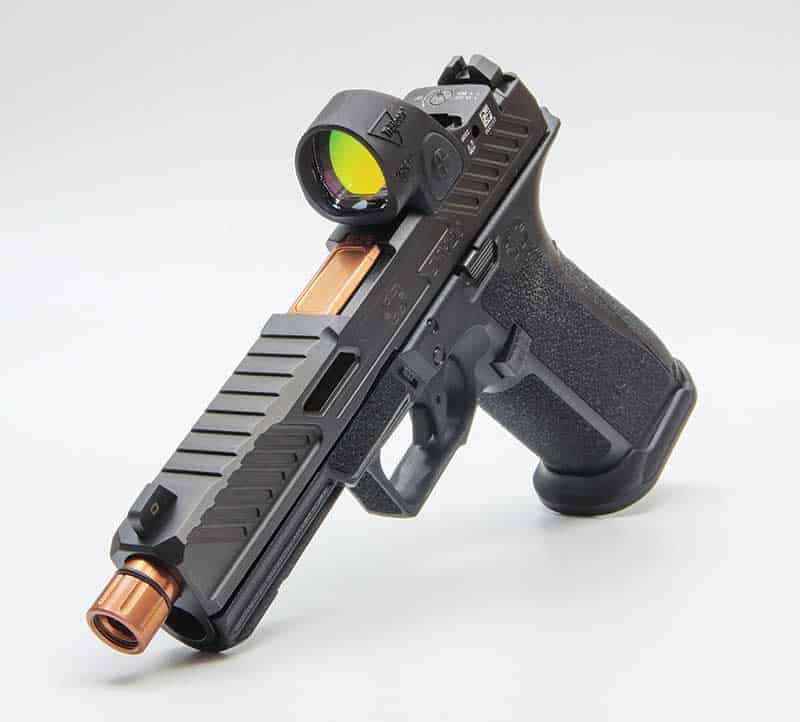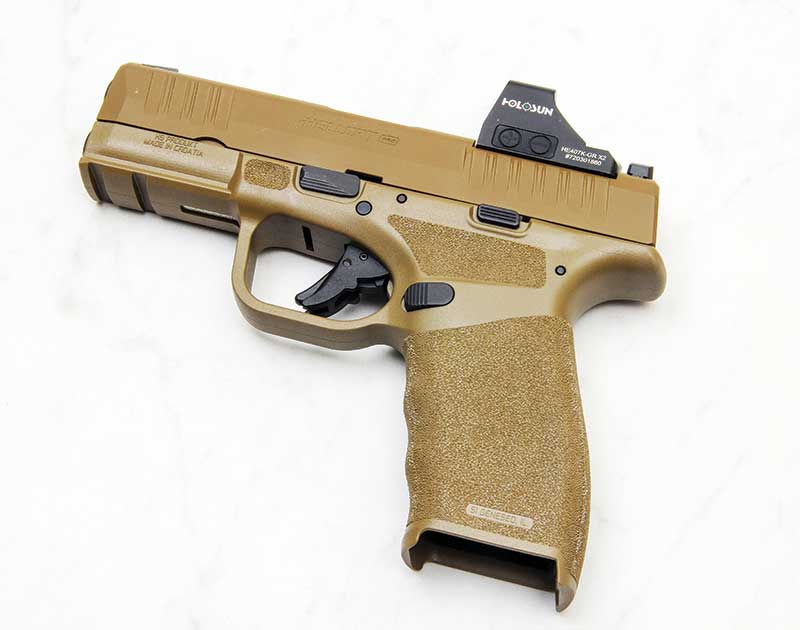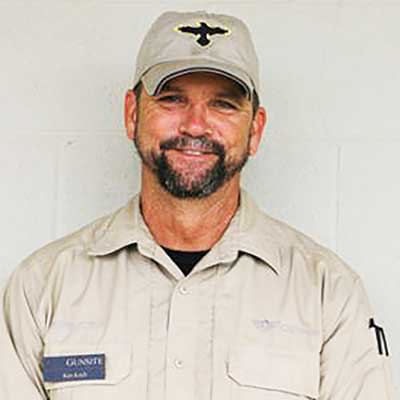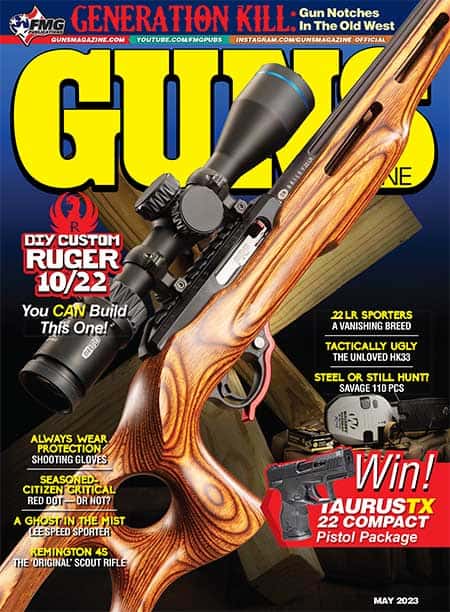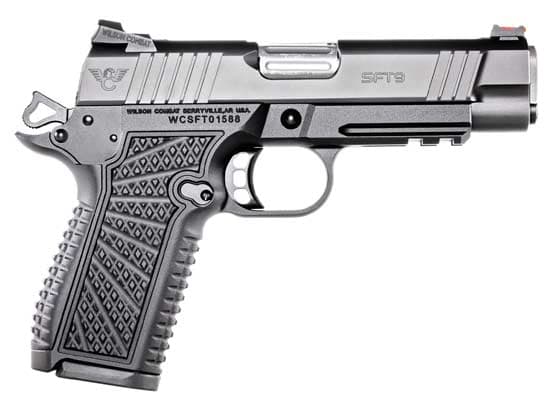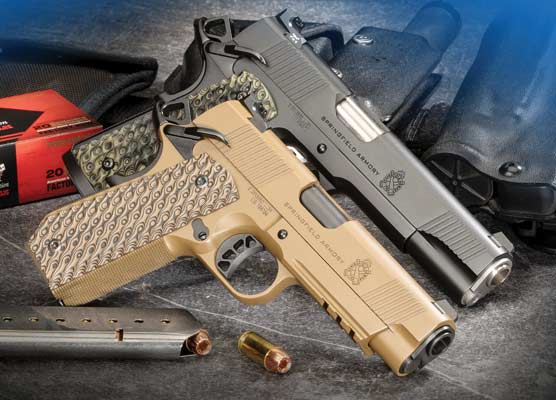Going Red Dot, Or Not?
The Seasoned Shooter’s Dilemma
If you’re like me, you’ve resisted any temptation to relegate the tried-and-true iron sights on your defensive handgun to “back-up” status by converting to a pistol-mounted optic or “red dot” sight. I am in my mid-50s and have invested decades of formal training and practice to achieve a high degree of subconscious competence in the fundamentals of gun handling and marksmanship. I’ve done this so I can focus on my response to a threat in any lethal force encounter I can’t avoid.
These are the foundations of the doctrine we teach at Gunsite. But like most “seasoned” shooters, I’m dealing with degrading eyesight, loss of mobility and arthritis in my wrists and shoulders from past injuries, and the unavoidable negative impacts on reaction time that happen as we become older.
Why Not?
I’ve been asked many times why I wouldn’t consider changing to a red dot sight to overcome these challenges, especially with my eyesight. Many assume a simple switch is the only thing needed to improve marksmanship.
My answer has always been the same. With so many pistol-mounted optic options on the market, the time needed for researching and selecting a sight to fit on my firearm, and meet my demands in reliability, weren’t worth the effort. I also knew the time it would take to make this transition was more than I was willing to invest.
After all, while nothing is “fail-proof,” I trust my iron sights. I am conditioned for the specific sight picture they present — high-visibility front dot in a blacked out “U” rear notch — and I am very consistent in the performance level I expect with them. The old adage “if it isn’t broken, don’t fix it” kept coming to mind.
Trick Or Treat?
Thanks to a red dot sight, I have discovered this “old dog” just didn’t want to learn new tricks, and I’ve learned some fixes in my fundamentals were definitely needed.
Earlier this year, I was confronted with the inescapable fact the pistol-mounted optic’s acceptance over the last three years or so meant more and more shooters would be coming for formal training with these sights. I needed to change with the times if I was going to meet their training needs as an instructor. Many of my fellow instructors had already made this switch and suggested I start looking at the options.
To my surprise, I found a red dot sight designed specifically for my firearm and with a strong reputation for reliability. No mounting plate conundrums or compatibility modifications, no need for new suppressor-height sights or compatible holsters. Just a flush and perfect fit on the slide allowed me to keep those tried-and-true iron sights I love so much. I sincerely hope this is a sign of things to come in the market as it made perfect sense to me and it made my decision much less of a struggle.
I still had no intention of converting my personal-defense choice to a red-dot sight platform. All I was pursuing was competency with a red-dot to provide effective instruction to shooters who use them. By way of comparison, I don’t carry a revolver as my choice for personal defense but I work with one from time to time so I can effectively teach students who do prefer a revolver. Why would a sighting system be any different?
So I set out on a journey of discovery by crafting a defined training process and committed to a time investment of just 15 to 20 minutes every day.
Finding A Way
The poignant discovery for me was over the course of the first three weeks, I found my presentation from the holster was strong but my trigger manipulation was inconsistent. It was amazing how much the little 2 MOA dot moves in comparison to my 13 MOA iron front sight during a trigger press. My grip also needed considerable modification to center the dot reliably.
I found this precision must be achieved not only during the presentation but when reacquiring the dot during reloads, malfunction clearances or from low-ready. A pleasant surprise for me came in the realization that sighting with both eyes open, something I’ve embraced for years, is an absolute must to get the most from a pistol-mounted optic and makes dot acquisition much easier.
A month or so after the lessons from my “homeschool” effort, I attended a two-day pistol-mounted optics trainer development course for Gunsite instructors. In an “ah-ha” moment, the course instructor said, “Your iron sights will whisper to you if your fundamentals suck — a red dot sight will scream it at you.” Truer words have never been spoken.
I am now three months into this journey and have discovered my newly acquired precision in fundamentals, forced by working with a red-dot sight, have also improved my performance with my beloved iron sights — especially at distances over 10 yards. Despite all the challenges of getting older, I am making shots in time splits I haven’t seen in years.
Pistol-mounted optics have strengths and weakness, like all things in life. Your results may vary, but if you adhere to the focus points I’ve listed below, you can reap the benefits of improved fundamentals in your presentation, grip and trigger manipulation. The result will bring accelerated accuracy with any sighting system you choose to bet your life on.
My trusted iron sights will always be there, but they are well on their way to becoming my “back-up.” This old dog is now “all-in” for new tricks.
Focus Points
• Simply converting to a red dot sight will not make you a better marksman.
• Commit to a defined training process and the time investment required to work the transition process. Six months of religious practice before an EDC transition is recommended.
• Recognize precision in the fundamentals of marksmanship, especially presentation, grip and trigger manipulation, are essential for reliable “dot” acquisition and accuracy.
• Embrace shooting with both eyes open to gain the full benefit of a pistol-mounted optic. If you already embrace this, it may take far less than six months for an effective transition.
• Invest in a professional training class covering the best practices of pistol-mounted optic use and skill development drills.
About Ken Koch
Gunsite Instructor Ken Koch is a retired Chief of Police with 30 years of service in Northern Arizona, New Mexico and Colorado. His law enforcement career includes more than 20 years of experience in firearms training, command of S.W.A.T., Hostage Negotiations and Explosive Ordnance Disposal teams.
About Gunsite
Gunsite Academy is the world’s oldest and largest firearms training facility. Originally known as the American Pistol Institute, Gunsite Academy offers firearms training to elite military personnel, law enforcement officers and free citizens of the U.S.
Gunsite.com
